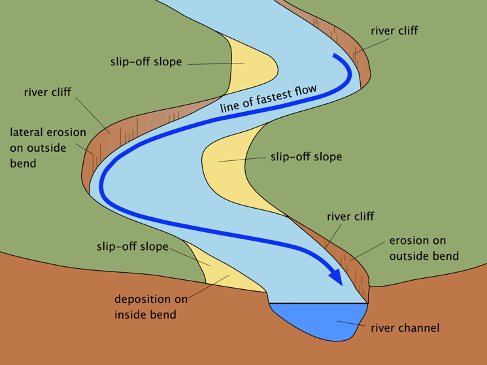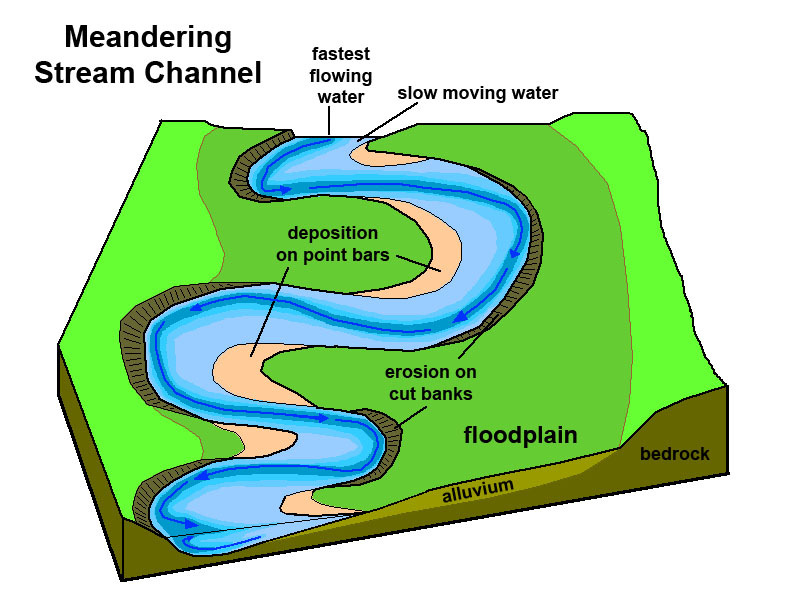
If it is resting on the bottom, it will remain there until the velocity is high enough to erode it, around 20 cm/s. Consider, for example, a 1 mm grain of sand. However, as Swedish geographer Filip Hjulström discovered in the 1940s, the relationship between grain size and the likelihood of a grain being eroded, transported, or deposited is not as simple as one might imagine (Figure 13.16). The faster the water is flowing, the larger the particles that can be kept in suspension and transported within the flowing water. Figure 13.15 Modes of transportation of sediments and dissolved ions (represented by red dots with + and – signs) in a stream. The solubility of these ions is not affected by flow velocity. Stream water also has a dissolved load, which represents (on average) about 15% of the mass of material transported, and includes ions such as calcium (Ca +2) and chloride (Cl-) in solution.

Turbulent flow is more effective than laminar flow at keeping sediments in suspension. As you know from intuition and from experience, streams that flow fast tend to be turbulent (flow paths are chaotic and the water surface appears rough) and the water may be muddy, while those that flow more slowly tend to have laminar flow (straight-line flow and a smooth water surface) and clear water. Smaller particles may rest on the bottom some of the time, where they can be moved by saltation and traction, but they can also be held in suspension in the flowing water, especially at higher velocities. They can be moved by saltation (bouncing) and by traction (being pushed along by the force of the flow). Large particles rest on the bottom - bedload - and may only be moved during rapid flows under flood conditions. During a flood, the water level always rises, so there is more cross-sectional area for the water to flow in however, as long as a river remains confined to its channel, the velocity of the water flow also increases.įigure 13.15 shows the nature of sediment transportation in a stream. Other factors that affect stream-water velocity are the size of sediments on the stream bed - because large particles tend to slow the flow more than small ones - and the discharge, or volume of water passing a point in a unit of time (e.g., m 3/second).

Figure 13.14 The relative velocity of stream flow depending on whether the stream channel is straight or curved (left), and with respect to the water depth (right). On a curved section of a stream, flow is fastest on the outside and slowest on the inside. In fact, the velocity just below the surface is typically a little higher than right at the surface because of friction between the water and the air. As shown in Figure 13.14, water flow velocity is decreased by friction along the stream bed, so it is slowest at the bottom and edges and fastest near the surface and in the middle. Water flow in a stream is primarily related to the stream’s gradient, but it is also controlled by the geometry of the stream channel. As we discussed in Chapter 6, flowing water is a very important mechanism for both erosion and deposition.


 0 kommentar(er)
0 kommentar(er)
